Welcome to Moda Fabrics!
Zip-a-dee-doo-dah: The Story of Zippers
Zip-a-dee-doo-dah: The Story of Zippers
In my 7th grade home ec class, putting in a zipper was a big deal. Sewing on a zipper required a special presser foot and a whole lot of courage.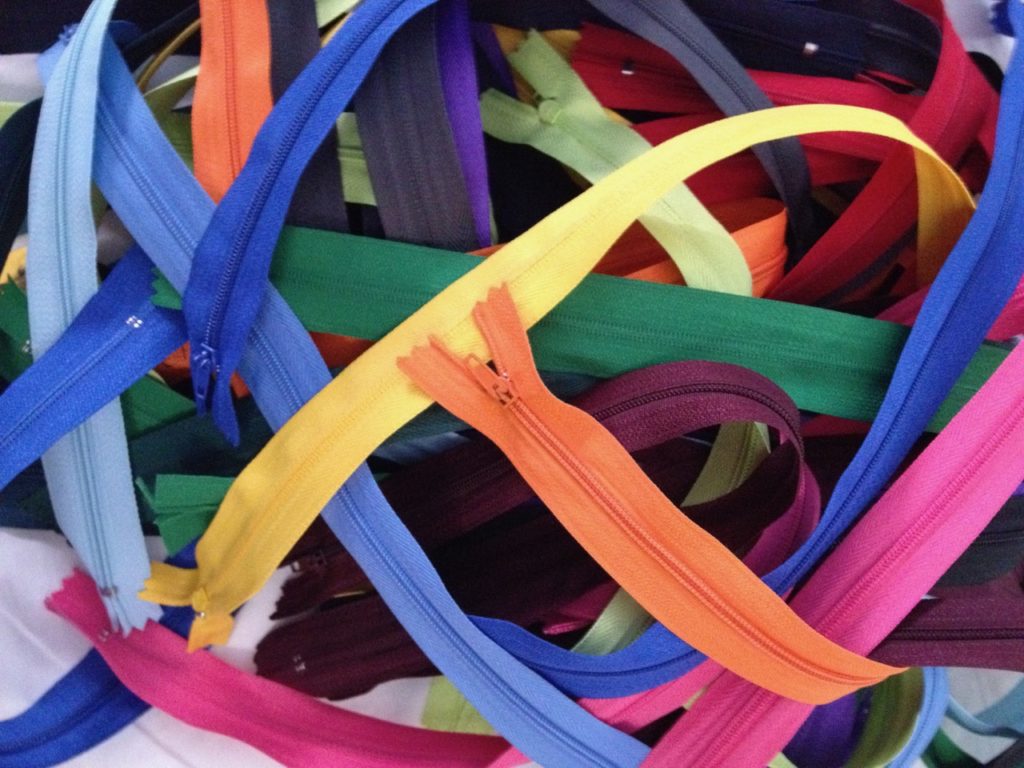
Years later, when I tried putting in a zipper, I wondered what all the fuss was about. Adding a zipper is a pretty clear-cut process and makes it possible to create great projects (zippered pouches, anyone?) and clothing. But it wasn’t always so.
 Zipper gif by By DemonDeLuxe (Dominique Toussaint) Creative Commons
Zipper gif by By DemonDeLuxe (Dominique Toussaint) Creative Commons
For years, buttons, buckles, and snap fasteners were the main way clothing and other fabric was held shut. Elias Howe, the man credited with inventing the sewing machine in 1845, also invented and received a patent for an “Automatic, Continuous Clothing Closure,” but seems to have lost interest beyond patenting it in 1851. It wasn’t until 42 years later that the complicated “Clasp Locker” was patented by Chicagoan Whitcomb Judson and sold as a way to keep shoes shut. And then it was another 20 years before Swedish-born engineer Gideon Sundback not only perfected the Clasp Locker but created a machine to manufacture the fastener. Finally, when the B.F. Goodrich used Gideon’s fastener on their new-fangled rubber boots they dubbed it a “zipper.”
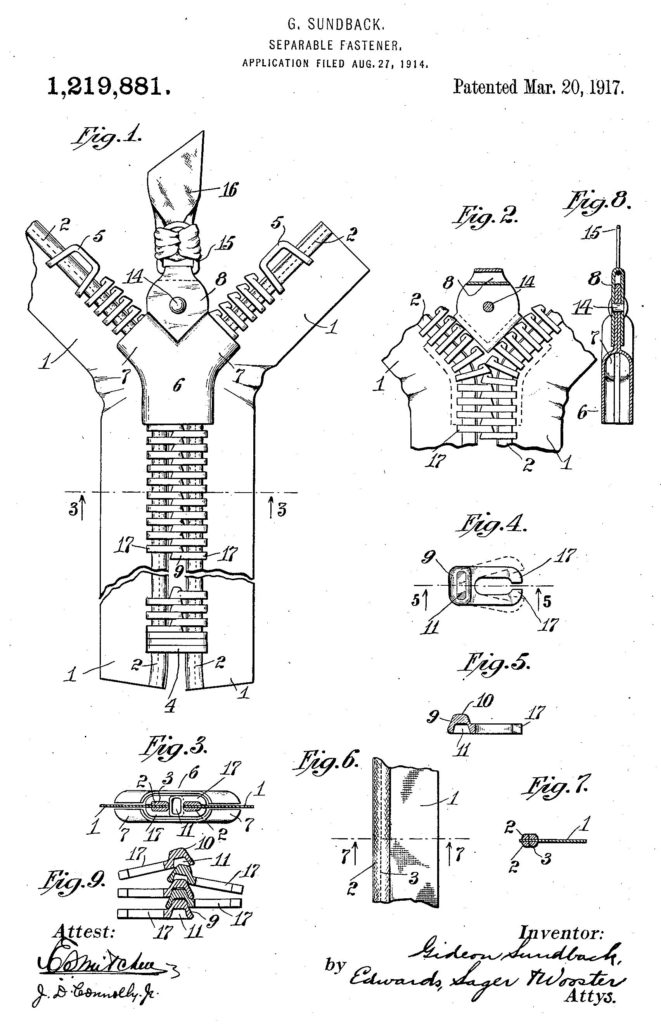
The clothing industry was slow to adopt the zipper, but in the 1930s children clothing was advertised as including zippers as a way to build self-reliance in young children by enabling them to dress themselves. French fashion designers “discovered” the zipper for use in men’s trousers in 1937, and Esquire magazine wrote that it would help avoid “the possibility of unintentional and embarrassing disarray.” Today, zippers are found on clothing, but also on pillows, suitcases, tents, and hundreds of other items.
When you’re talking about zippers, it helps to know the basic terminology:
Chain: The continuous piece created when the two sides of the zipper come together.
Slider: the bit that moves up and down the zipper chain. You hold the pull tab to move the slider along the chain.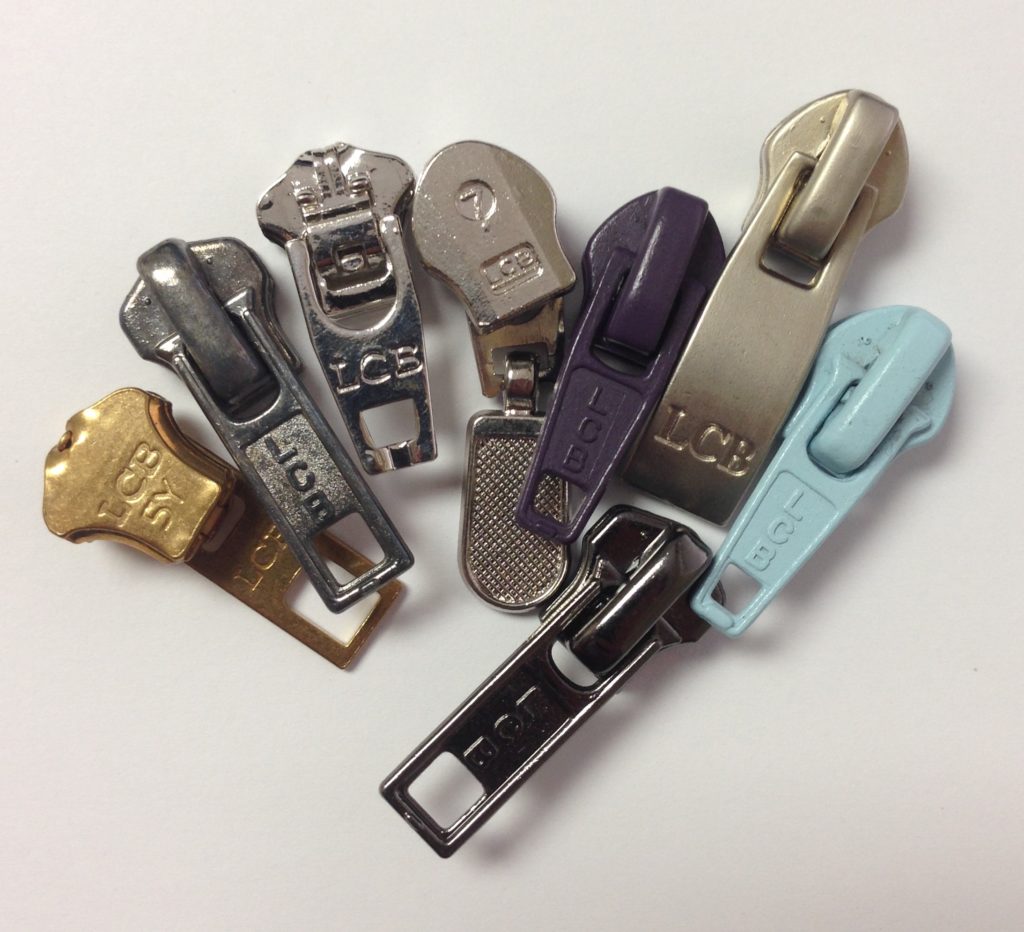
Tape: the fabric portion of the zipper
Teeth: the individual interlocking pieces of the zipper. The teeth most often are made of nylon, but can also be made of molded plastic and metal.
End stops: the part where the zipper begins and ends. The top stop prevents the slider from coming off, while the the bottom stop prevents the zipper from separating completely.
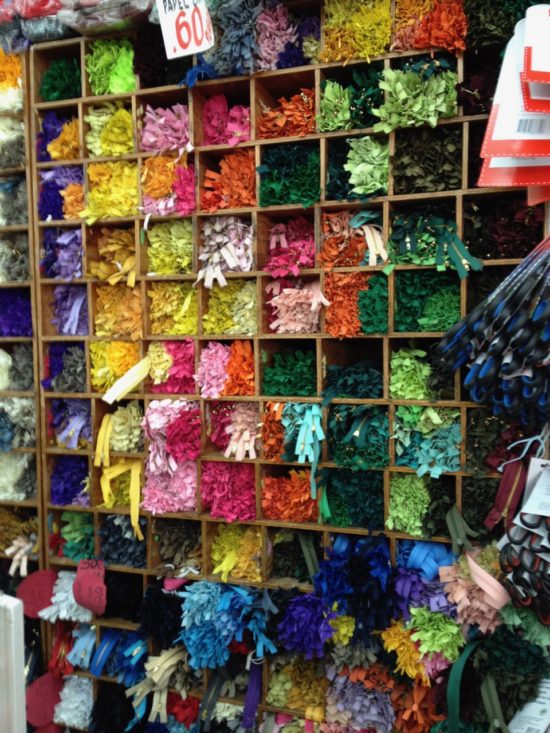 Zippers for sale in Oaxaca, Mexico.
Zippers for sale in Oaxaca, Mexico.
Today there are a plethora of zippers to use in sewing projects. Traditional zippers used for garment sewing and requiring a zipper foot to install are easily found. The most common zippers are made of injection molded plastic sewn to nylon tape and are sometimes referred to as coil zippers.
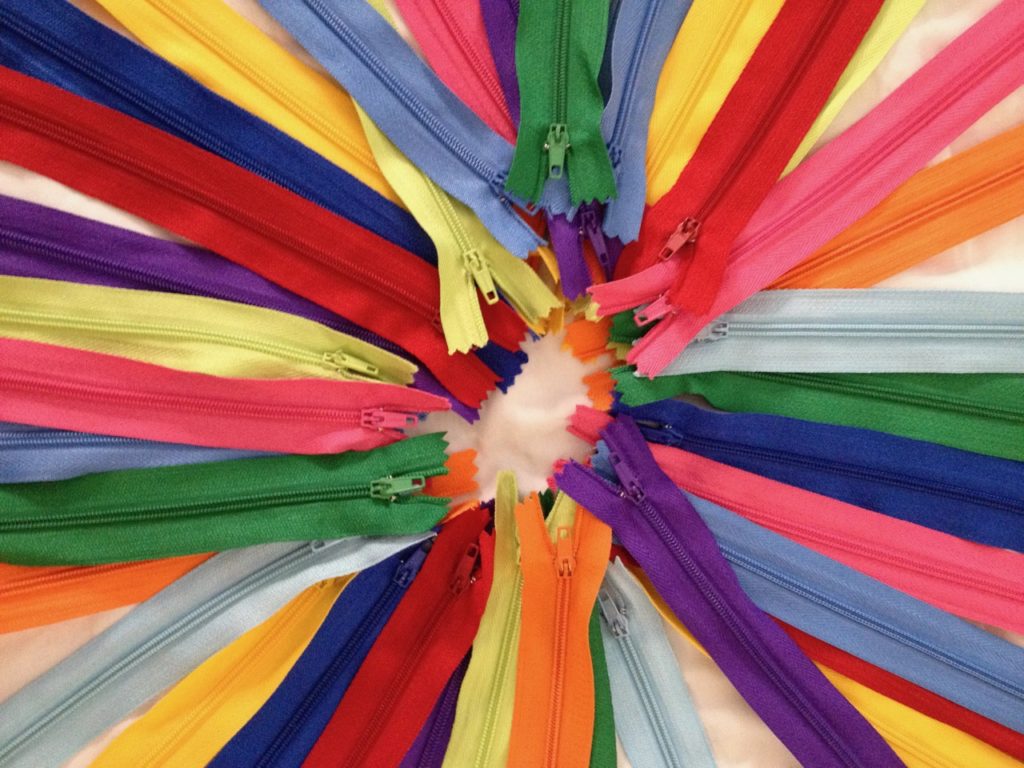 Nylon coil zippers
Nylon coil zippers
You might have to search a bit for other kinds of zippers, but they can add a bit of pizazz (and ease) to your project. Metal zippers and extra-wide zippers—the tape on either side of the teeth is wider, so that you can sew them on with a ¼” seam and without a zipper foot—are available, and zippers come in a huge range of colors. Some even feature lacy or patterned tape. There are "invisible zippers," where the tape shows and the teeth are hidden, but some zippers are placed front-and-center, as a decorative embellishment.
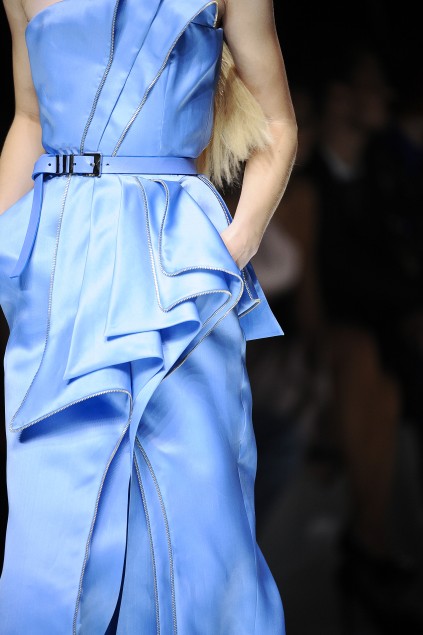 Versace spring 2009 collection
Versace spring 2009 collection

Interesting zipper factoids
- Zippers are measured from “component to component,” which means the zipper’s length is determined by the distance between the top stop and the bottom stop. The flappy bits of zipper tape at either end aren’t counted in the measurements. (courtesy of Zippersource)
- You can create a custom zipper by cutting a longer-length nylon zipper to the exact length you need. For example, a 12” zipper could be cut to 10” or 8”. Metal zippers and zippers with molded plastic teeth (these are fused, rather than sewn on the zipper tape, and tend to be used in heavy zippers) can’t be cut, so you need to buy the exact size your pattern calls for.
- There are myriad ways to fix a stuck zipper. A tried-and-true method involves rubbing bar soap on the zipper teeth. More modern advice includes applying a silicone spray to the coil.
If you’ve got anxiety about including a zipper in your next project, check out these blog posts and video tutorials from Moda designers by clicking on their names:


Joanna Figureroa of Fig Tree and Co.,

and Sherri McConnell of A Quilting Life (And Sherri here, too.)
They'll make you feel more confident about that moment when you cut the end stop off the coil, as well as how to sew it on.
When I need a sewing fix but don’t have a lot of time, I make a zippered pouch. It provides design opportunities and sewing satisfaction and in the end I’ve got a bag that can transport my notions, pencils, or lipstick. The more zippers I put in, the easier it becomes. My 7th-grade home economics teacher, Miss Wolcott, would be proud of my zipper prowess.
How about you—do you have any zipper secrets? What’s your favorite project that includes a zipper?
SaveSave
SaveSave

Comments